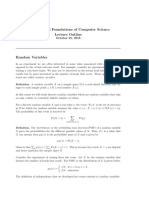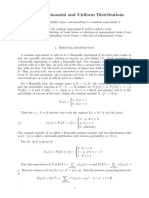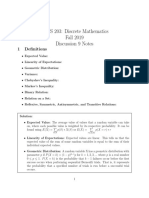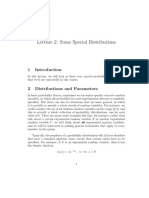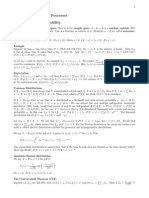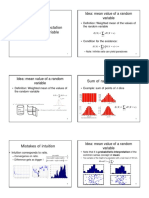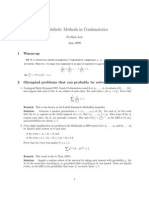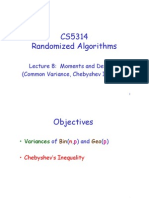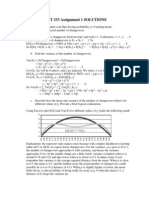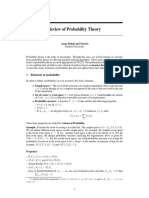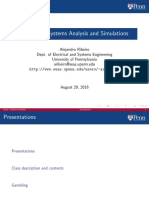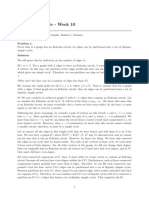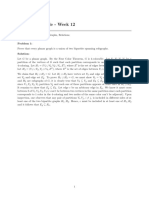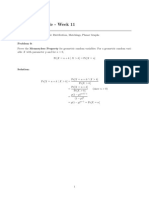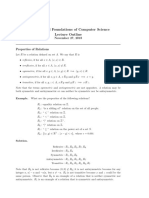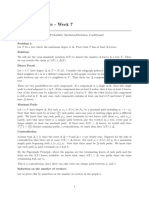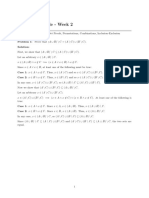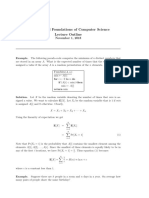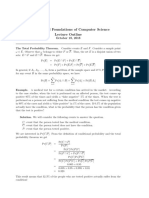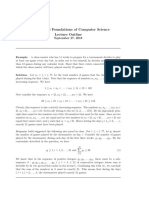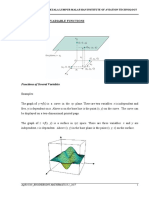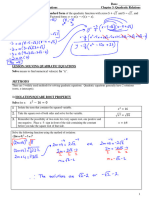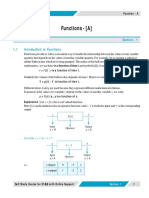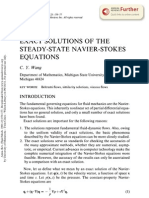0% found this document useful (0 votes)
46 views4 pagesMathematical Foundations of Computer Science Lecture Outline
1) The document outlines key concepts in probability theory including the theorem on independence of random variables, the geometric distribution, and Chebyshev's inequality.
2) It defines a geometric random variable which models the number of Bernoulli trials until the first success, where the probability of success is p.
3) It shows the expectation of a geometric random variable is 1/p using multiple methods like the definition of expectation and the memoryless property.
Uploaded by
Chenyang FangCopyright
© © All Rights Reserved
We take content rights seriously. If you suspect this is your content, claim it here.
Available Formats
Download as PDF, TXT or read online on Scribd
0% found this document useful (0 votes)
46 views4 pagesMathematical Foundations of Computer Science Lecture Outline
1) The document outlines key concepts in probability theory including the theorem on independence of random variables, the geometric distribution, and Chebyshev's inequality.
2) It defines a geometric random variable which models the number of Bernoulli trials until the first success, where the probability of success is p.
3) It shows the expectation of a geometric random variable is 1/p using multiple methods like the definition of expectation and the memoryless property.
Uploaded by
Chenyang FangCopyright
© © All Rights Reserved
We take content rights seriously. If you suspect this is your content, claim it here.
Available Formats
Download as PDF, TXT or read online on Scribd
/ 4












